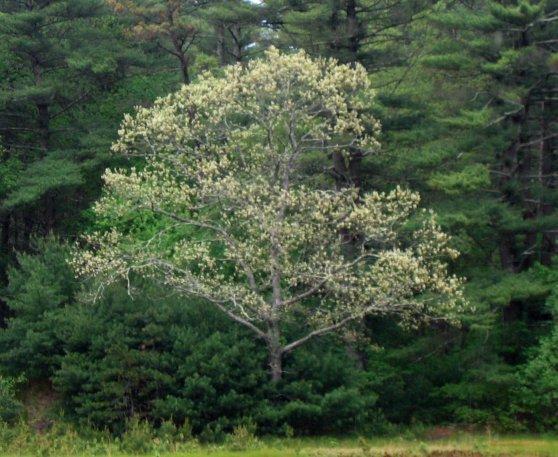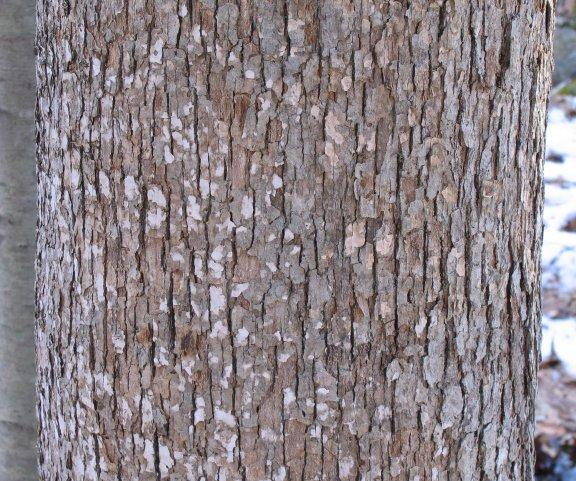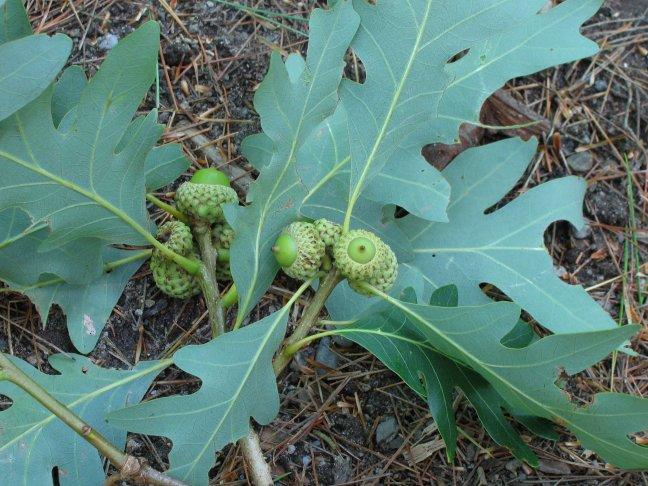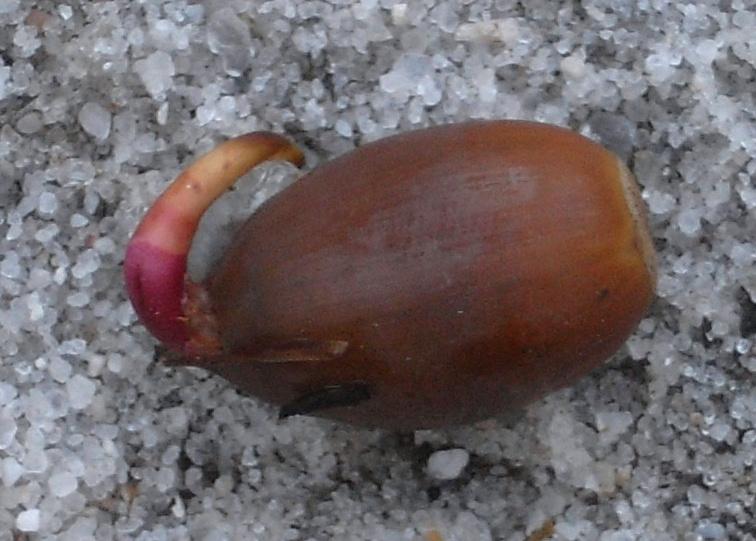White Oak
Quercus alba
Of about half-a-dozen oak species present in the Alper Preserve, this one is the most frequent and conspicuous. The high abundance
of white oak makes Alper Preserve special! While it may be challenging to tell some other oaks from each other, white oak
is the easiest to identify, as its leaves are light-colored (glaucous) on the underside and have blunt, rounded lobes without
bristles—a character unique among oaks in our area. The bark on mature trunks often becomes strikingly light-colored, nearly
white, which makes white oak look so different from other forest trees that it can be recognized from the distance. Leaves,
when they emerge in spring, are covered with dense whitish hairs and thus also appear brightly light-colored. As many other
trees, white oak develops a narrower crown and grows much taller in the forest than in the open, reaching up to 100 ft. As
compared to other oaks, white oak is extremely long-leaved. Its valuable wood has been used for various woodwork, especially
barrel-making, hence its technical name: stave oak. It takes acorns of white oak two years to ripen. In any oaks, abundant
crops (mast crops) of acorns are produced about every few years. Acorns of white oak germinate in the fall, so that the oak
spends its first winter as a little sprout. This makes it more vulnerable as compared to red, black, scarlet, or scrub oak,
which postpone germination until spring. Besides, over 100 species of birds and mammals feast on its sweet acorns, favoring
white oak over red, scarlet, black, and scrub, all of which have bitter acorns.

White oak in spring. May 23

Bark

Leaves glaucous on the underside and first-year acorns. August 18

A germinating acorn. October 3